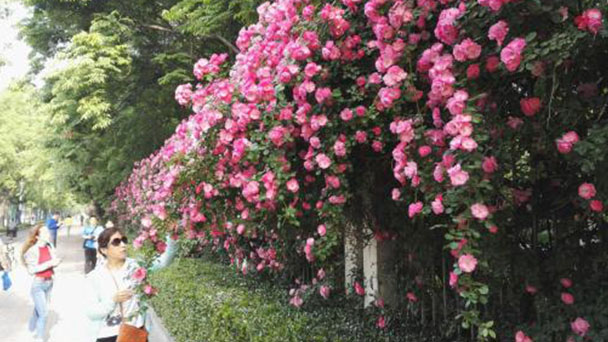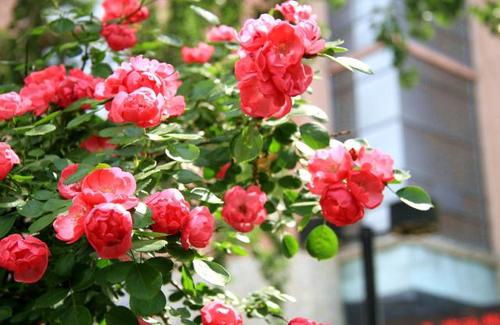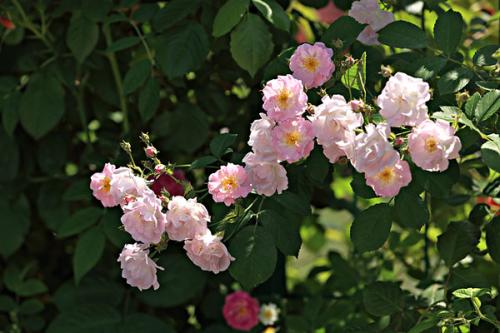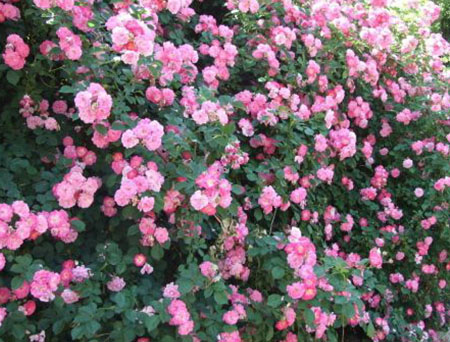Rosa multiflora profile
Written by Maggie
Nov 19 2020

Rosa Multiflora colors are mostly pink and white, which have been the best flowers since ancient times. Produced in Jiangsu, Shandong, Henan and other provinces of China. Japan, Korea also has a small distribution. It has very high value in the beautification of home and medicine.
Rosa Multiflora picture

Morphological characteristics of Rosa Multiflora
Rosa Multiflora is a climbing shrub. Branchlets are cylindrical, usually glabrous, with short, thick, slightly curved fascicles. Leaflets are 5-9, lobules sub inflorescence sometimes 3, petiole 5-10 cm long. Leaflet blades obovate, oblong or ovate, 1.5 -- 5 cm long, 8 -- 28 mm wide, apex acute or obtuse, base suborbicular or cuneate, margin single serrate, thinly mixed with double serrate, glabrous above, villous below. Petioles and leaf axes are villous or glabrous, with scattered glandular hairs. Stipules grate-dentate, mostly adnate to petiole, margin with or without glandular hairs.
Rosa Multiflora flowers, arranged in panicles, pedicels 1.5-2.5 cm long, glabrous or glandular hairy, sometimes base with grate-toothed bracteoles.Flowers are 1.5 -- 2 cm in diam., sepals lanceolate, middle with 2 linear lobes, glabrous outside, pilose inside. Petals are white, broadly obovate, apex concave, base cuneate. Styles united into bundles, glabrous, slightly longer than stamens. Fruit is subglobose, 6 -- 8 mm in diam., reddish brown or purplish brown, lustrous, glabrous, sepals glabrous.
Rosa Multiflora growth habits
Rosa Multiflora likes sunshine and tolerates half shade and cold. It can overwinter in open fields in most areas of northern China. The soil requirements are not strict, drought resistant, poor resistance, but the growth is better if planted in deep, loose, fertile and moist soil with free drainage, but also can be normal growth on heavy clay soil. Do not tolerate water and wet, avoid stagnant water. When the new plant is transplanting, organic fertilizer should be applied. In the first one or two years after frost planting, furrow and apply basal fertilizer once a year in late autumn to facilitate growth and flowering. It has strong budding ability, pruning resistance and pollution resistance.

Rosa Multiflora plant distribution
Rosa Multiflora is found in Jiangsu, Shandong, Henan and other provinces of China. Japan, Korea also has a small distribution.
Rosa Multiflora main value
Home value
Placing Rosa Multiflora in your bedroom is also a good choice for matching your home style. People spend about a third of their time on sleep, the bedchamber collocation also has a great influence on people. If one or two Rosa Multiflora plants are placed on the sunny side of the bedroom, it will be a good choice for the owner to lie there and absorb the exhaust gas from the room over a long period of time. A few potted Plants of Rosa Multiflora can also be placed on the balcony. Because the balcony is relatively empty and the sunlight shines more fully, it is very suitable for planting Rosa Multiflora, which is very suitable for the growth of Rosa Multiflora.
Medicinal value
Rosa Multiflora clears heat, and stomach, promotes blood circulation, stops bleeding, and detoxifies. It is epigastric distension, vomiting blood, epistaxis, oral ulcers, carbuncle, irregular menstruation.

Latest Updated
- Benefits of Bugleweed - 7 Science-backed Health Benefits
- Bugleweed Dangers & Side Effects - Is It Poisonous?
- How to Plant Evergreen Trees - What You Should Know
- When to Plant Evergreens - Grow Guide for Evergreen Trees
- 12 Wonderful Evergreen Shrubs for Your Garden
- 12 Popular Evergreen Plants with Pictures for Beginners
- When And How To Prune A Lilac Bush Like a Pro
- How to Grow & Care for Lilac Vine (Hardenbergia Violacea)
- Japanese Lilac Tree (Syringa Reticulata) Care & Propagation Guide
- Shumard Oak Pros and Cons - What to Know
Popular Articles
- Winter maintenance of Antirrhinum Majus
- How to Grow Terminalia Mantaly Tree
- How to Grow and Care for Crossostephium Chinense
- How to grow Antirrhinum Majus in spring
- Peristeria Elata (Dove Orchid) Profile: Info & Care Guide
- Underwatered Snake Plant (Sansevieria Trifasciata) - Signs And How To Fix
- How to Care for Brazilian Jasmine Plant (Mandevilla Sanderi)
- How to Grow & Care for Graptopetalum Purple Delight in Summer
- Rosa Chinensis (China Rose): Plant Growing & Care Tips
- How to Care for Baby Sun Rose (Aptenia Cordifolia)